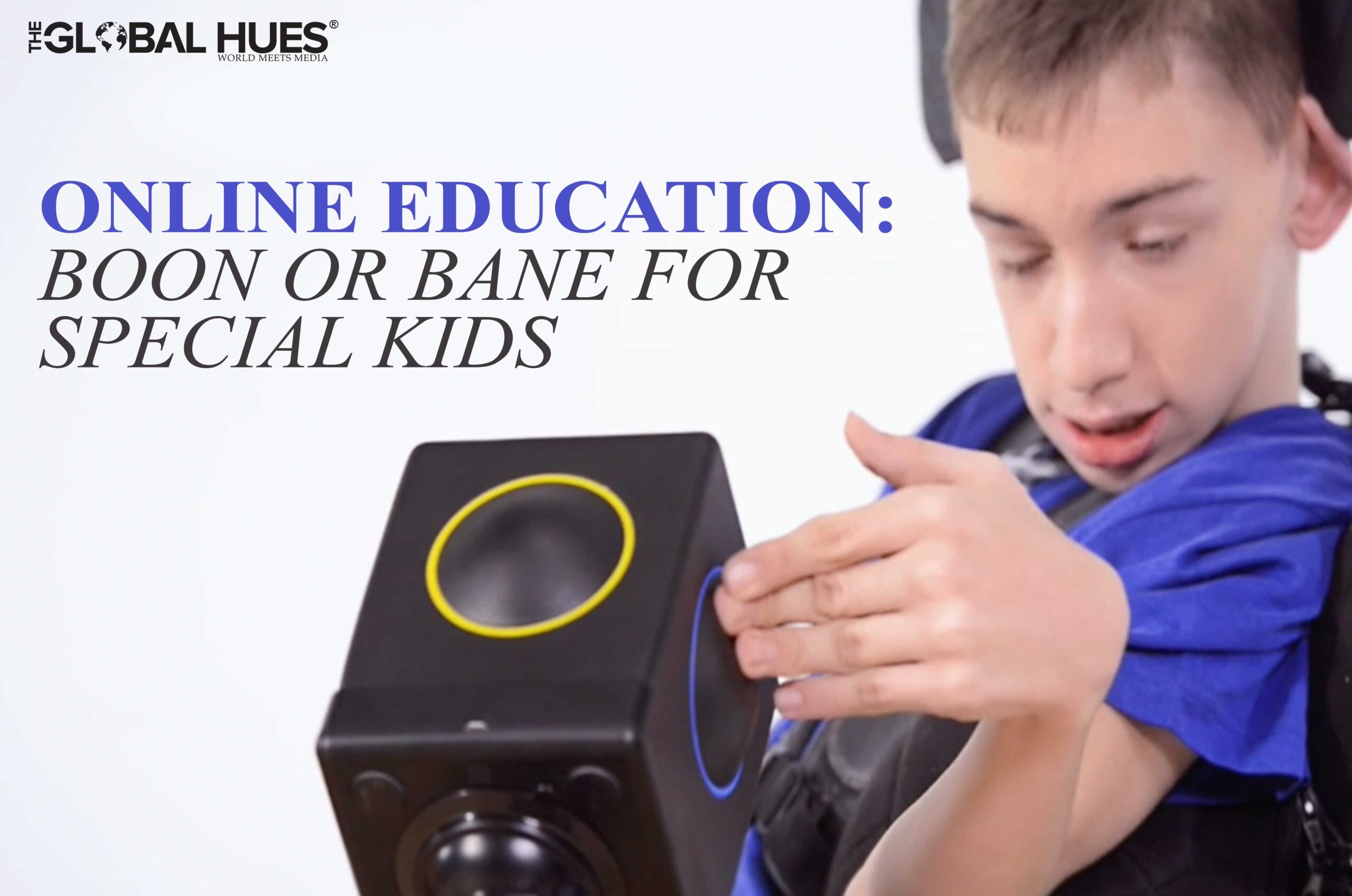Online platforms of teaching can be daunting for students with special needs. However, many resources can be of help, but how?
The ongoing pandemic shifted education to new modes and methods. Online education became popular among educators and educational institutions to tackle the ongoing challenges. Technological support and various assistance resources came out with flying colors, except for a vast majority of disabled students. Distance learning is a huge struggle, leading to growth impediments and controlled development for kids with special needs. Not just children, but the caretakers are equally in distress amidst the changing wind.
Working on the progress of the overall development of autistic kids, including social-emotional skills, personal interactions, and disciplined routines, is devastating while learning from home. Not to withstand, students who lack the ability to speak or are minimally verbal can’t interact on virtual platforms. Special kids demand trained educators who understand the requirements of all life skills along with impulse control and self-management.
Assistive technology to rescue
One major problem to tackle among disabled children is invoking love for learning. Various Ed-tech platforms are coming forward with basic skills like reading and maths courses for children with disabilities to help them in advanced education. Evolving technology and internet availability are indeed fast-forwarding the process.
Children with ADHD, visual-motor deficiency, dyslexia, and dysgraphia can be helped via cutting-edge software, mobile applications, assistive virtual reality, and much more. The range of technology expands from lower-levels such as graphic online worksheets to higher-levels like artificial intelligence. In the physical classroom, the success of many products is already established whereas online learning is just stepping up to discover newer alternatives.
Stepping up the game
In the pool of newer developments, a few have proven to be effectively established in online modes for special children. Text-to-speech software is one of them, designed to help students facing reading difficulties. The category covers children with common print disabilities of any kind of visual impairment, dyslexia, blindness, or learning difficulties.
Impaired ability to read can be overcome by benefiting from text-to-speech, which reads aloud any text as per demand in an understandable voice by scanning the document. Children with ADHD, intellectual problems, and autism also benefit from this feature. Additionally, the accuracy of text-to-speech software is uncanny. American Foundation for the Blind (AFB) suggests for people with low vision,
“Learning to listen to speech output will prove more productive for such individuals than struggling to read text while leaning close to the computer screen.”
Some popular software aiding read ‘aloud features’ are Word Talk by Microsoft Word and Supernova Access Suite. Word Talk not just reads aloud, but can create an audio file that can be saved and accessed later. People with visual disabilities and inefficiency to operate a mouse can access features of Word Talk using customized Keyboard shortcuts.
Word also offers programs to help children with writing disabilities by predicting words that users might intend to write. A smart technology based on recent use, syntax, and spellings. Children with memory problems can benefit from this feature too. On the other hand, Supernova Access Suite has a speech as well as screen magnifier feature with braille display support.
Solving the trouble of making keynotes, a writing tool ‘Builder’ steps in the game. This software has abilities to integrate notes. Builder carefully breaks down the whole process into three simple steps. A graphical tool is used to scan the document and add necessary information at appropriate locations easing the process of note-making. In the end, an automatic process creates a paper where any note can be dragged and dropped creating a rough draft.
Assistive technology is progressing in aiding hearing for deaf and other children suffering from auditory learning problems. The National Association for the Deaf suggests the use of hearing aids and cochlear implants by children who need hearing assistance. These devices can impeccably increase the reach and effectiveness of learning. Listening devices are embedded with transmission technologies to capture sound, making hearing possible. The market currently holds different categories of assistive listening systems with different transmission technologies.
It’s only a beginning
The advancements have a longer path to cover. Systems that can enable deaf students to watch video study materials, the same as their fellow mates can be made possible. Closed captioning and Subtitling can be used to create videos for students with speech disorders. As for children facing problems with mobility, FaceMouse is software that allows a webcam to become a mouse. The children can operate various functions with the use of head and facial gestures. The variety of functions include clicking, typing, pointing the cursor, etc. Another system to help students with mobility challenges, such as paralysis, is Sip-and-Puff.
The children can operate a system using a mouthstick to control operations. The availability of Alternative Augmentative Communication (AAC) tools used by renowned names like Stephan Hawking, brought a revolution for disabled kids. However, there is a lack of such advanced tools while talking about learning via Ed-tech. Some companies are actively researching newer alternatives to make communication in real-time, both language and speech-generation a reality, to aid special children and educators.
A tool named Kred Rewards is developed by special needs teachers and former tech executive Nidhi Patel. “Kred Rewards positively motivates kids to build skills while being rewarded with a weekly allowance based on their skill-development, and access to a cool rewards store. Skills can be academic, social/emotional, home, or developmental. But building self-management skills — being able to set your own goal and track it to completion — is one of the key goals we have with students with special needs, and especially children on the spectrum,” said Patel.
Some popular programs such as Khan Academy, IXL, Do2Learn, and many other lesser-known sites can be actively utilized to fulfill the demands of special needs for disabled kids. It’s suggested to take trials on a few platforms before opting for the best as per a child’s interests. Moving on the same lines of development, an enormous revolution can be brought to the education sector for special kids. A key point for educators to keep in mind is providing written, simple, and easily trackable course material that can be identified by various technologies.
Education for all
Disabilities lead to many challenges throughout the life of a child, education should not become one of those challenges. Success, future, and personal development are pillars built via education and learning. Any tools making it possible must be considered and used in the best possible way. The art of distance education is still in infancy for kids needing special assistance. However, with every trouble, the requirement of necessary solutions reaches a peak. Someone steps ahead to resolve the issue.
Ed-tech startups and various entrepreneurs step in to uplift the standards and fill the societal gaps. Multiple alternatives are flooding the market and some are still under ongoing research to enhance virtual offerings. The business is going to expand inevitably along with the extended benefits to special kids. In the end, the goal is “Education for all, and education to never stop.”
- Children’s Online Safety & Cybersecurity: A Modern Necessity
- Impact Of COVID-19 On Early Childcare And Education
- On The Other Side Of Education Technology
- New Education Policy Simplified
- Affordable And Accessible Quality Education
- List Of 10 Best Online Courses To Boost Resume
- Digital Learning: A New Era Of Education
- NEP 2020: India Changes Education Policy After Years
- How Can You Make Online Learning More Effective?
- The Indian EdTech Industry: Trends To Watch In Future
- The New Chapter: Generative AI And Beyond




